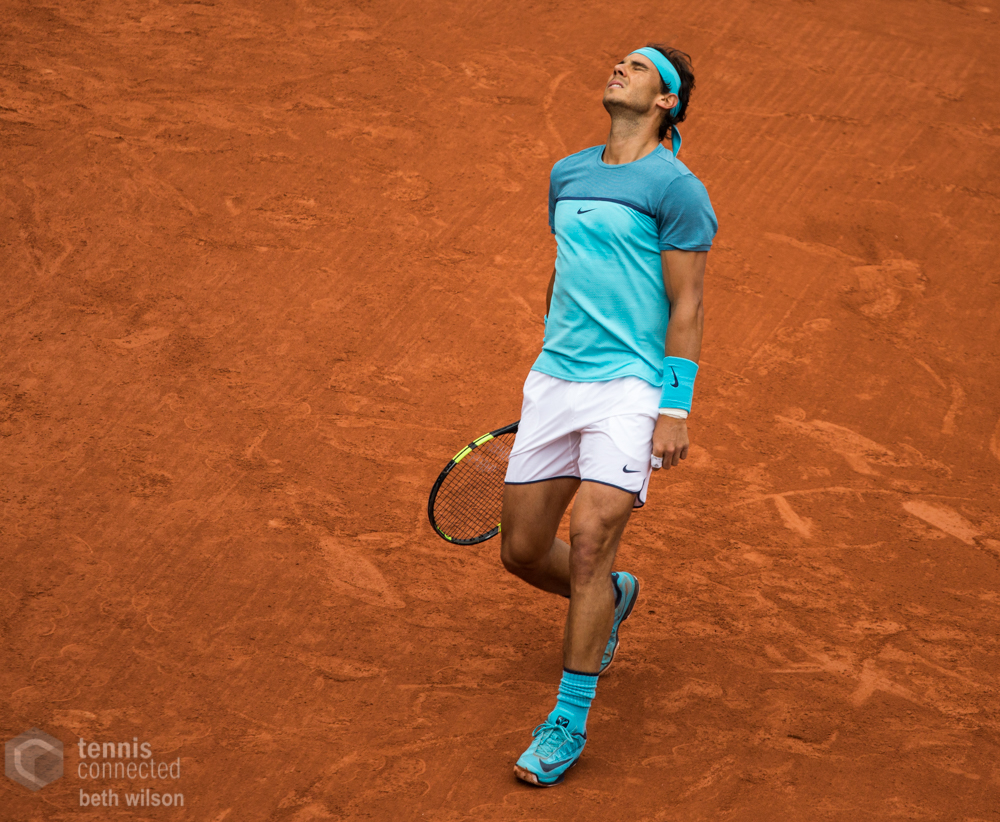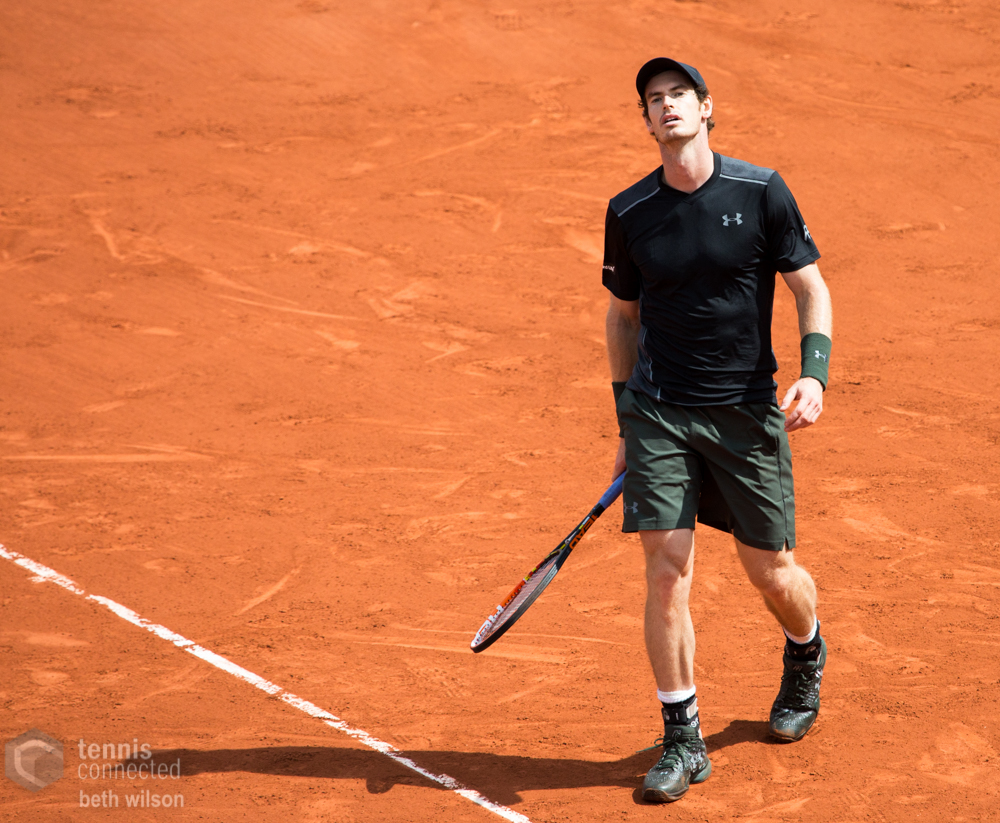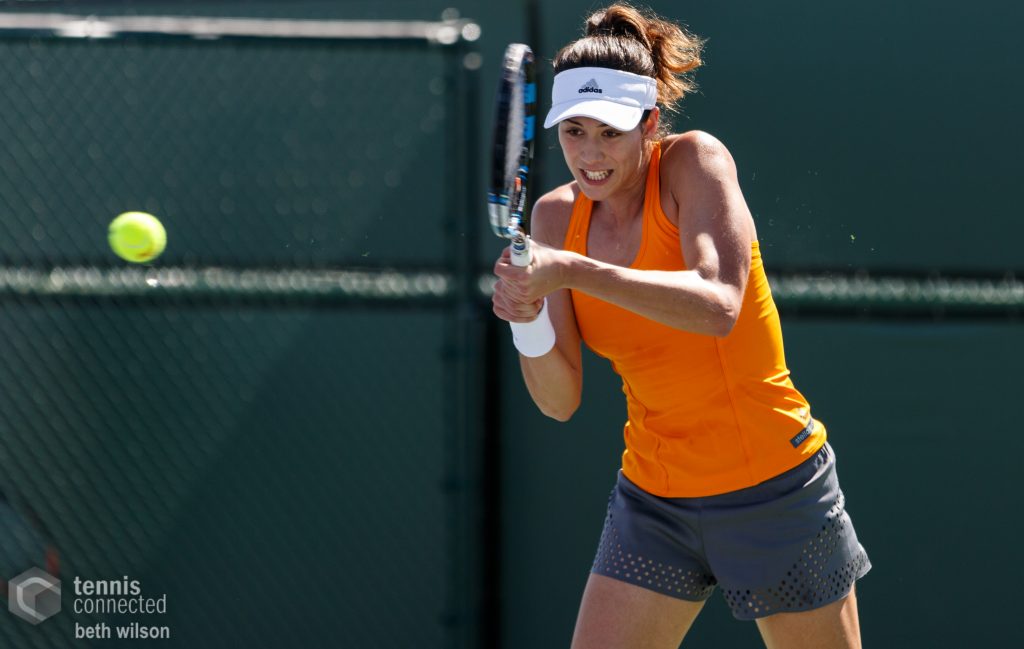As the players gather in Paris, the ATP and WTA tours appear set to move in opposite directions. While the men will be led by a familiar face from the recent past, the women will look for someone new to rise to the occasion over the next two weeks, and provide a clue to the tour’s future.
The familiar face on the men’s side is, of course, Rafael Nadal’s. After winning three titles on clay and snapping his seven-match losing streak to Novak Djokovic this spring, the Spaniard has re-established himself as the dominant player on dirt. The only question now is whether the nine-time French Open champion is a solid favorite, or an overwhelming favorite, to win the tournament for a 10th time.
I would say that Nadal is a solid favorite, rather than an overwhelming one. Yes, his career record at Roland Garros is 72-2, but he hasn’t won there—or at any Grand Slam—since 2014. Rafa is playing with more confidence than he has in three years, and he has gone some ways to regaining his aura of invincibility on clay. But he’ll also turn 31 during the tournament’s first week; the last man to win the French Open in his 30s was Andrés Gomez in 1990.

In the years since Nadal last triumphed in Paris, three younger players have arrived—Dominic Thiem, Nick Kyrgios, and Alexander Zverev—who have no reason to believe that Rafa is unbeatable. Kyrgios beat him at Wimbledon in 2014; Thiem beat him last week in Rome; and Zverev reached match point against him in Indian Wells in 2016. While Kyrgios has been injured, the 23-year-old Thiem and the 20-year-old Zverev are peaking at the right time.
Thiem reached the finals in Barcelona and Madrid before knocking off Nadal, but Zverev may have outdone him by beating Novak Djokovic in his first Masters 1000 final in Rome. The Austrian and the German met in the quarterfinals in Paris, and no one will be surprised if they go on to win multiple French Open titles in the future. But I don’t think the future will arrive for either of them this year. They possess the game and the belief, but do they have what it takes physically to win seven three-out-of-five-set matches on clay over two weeks? Thiem is relatively slight by today’s ATP standards, and Zverev has yet to fully fill out. I still think it’s more likely that a veteran baseline bruiser like Stan Wawrinka mounts a challenge to Nadal. The Swiss hasn’t had a productive spring, but as we learned when he won the French Open in 2015, pre-tournament form doesn’t mean much with the ever-streaky Stan.

Speaking of veteran Slam champs, what about last year’s finalists, and this year’s top two seeds, Andy Murray and Djokovic? Can either of them turn around their season-long slumps in time to make it to the final Sunday again? In Murray’s case, the answer would seem to be no; six months after completing his long slog to the No. 1 ranking, he still looks shellshocked by the effort, and his last match was a blowout loss to Fabio Fognini in Rome. Djokovic did show signs of life with his run to the final at the Foro Italico, and his time with Andre Agassi in Paris should give him a needed jolt of positive energy and fresh ideas. But Djokovic’s pancake-flat performance against Zverev in the Rome final made it seem less likely that he can return to Slam-winning form in the span of two short weeks in Paris. If Djokovic plays that way against virtually anyone, in any round, he’ll be in danger of losing.
All of which brings us back, as it so often does at Roland Garros, to Rafa. No one knows how to win in Paris like Nadal, and while he’s not a mortal lock to do it for a 10th time, would you bet against him?
*****
The question on the men’s side is: Do you dare to bet on anyone other than Rafa? The question on the women’s might be: Do you dare to bet on anyone at all?
We can’t begin to discuss the WTA field without talking about who isn’t in it. Serena Williams, 23-time major champion, is the most significant absence, followed at a distance by two-time French Open winner Maria Sharapova, and former No. 1 Victoria Azarenka. A lot of firepower will be relegated to the sidelines over the next two weeks.
In one sense, that makes life easier for the players who will be playing. But it also poses a challenge. Whenever Serena is in a tournament, no one else has to worry about being the favorite, or feeling any pressure to win the whole thing. When she’s not there, though, expectations change; suddenly a dozen players can feel like they have a legitimate shot at a major title. But who has the confidence to step into the void and make it happen?

Last year that player was Angelique Kerber, who won two Slams and finished No. 1. So far in 2017, the German has stepped back out of the spotlight. She comes to Paris after three early defeats in Stuttgart, Madrid, and Rome. If recent history is a guide, she won’t do much better in Paris. Last year Kerber lost in the first round at the French, before finally bouncing back to reach the Wimbledon final.
Roland Garros has been kinder in recent years to two other women: Last year’s champion, Garbiñe Muguruza, and the 2014 runner-up, Simona Halep. Like Wawrinka on the men’s side. Muguruza has shown us how far she can ride a hot streak in Paris, and it looked like she might be gearing up for another one when she reached the semis in Rome. But she had to retire with a neck injury in that match. Halep, another terminally hot-and-cold player, has been even better over the last month, defending her title in Madrid and reaching the Rome final. That was enough to make the Romanian the bookies’ favorite in Paris, but like Muguruza, Halep will also be nursing an injury, to her ankle. Can her shaky leg, and equally shaky confidence, hold out for two weeks? She’ll have to take it match by match.
With the top players struggling, faces both old and new may have the opportunity of a lifetime. France’s Kristina Mladenovic is the most improved woman of 2017, but can she deal with the intense home-court pressure? The 24-year-old has never been past the third round in Paris in eight tries. Elina Svitolina vaulted to No. 6 in the world with her title in Rome last week, but the 22-year-old has never been past the quarters at any Slam. Top Tenners Karolina Pliskova and Johanna Konta have yet to transfer their hard-court success to clay.
If the kids aren’t ready to take over the WTA yet, what about the adults? Venus Williams, who will be 37 in June, reached the final of this year’s Australian Open, and reached the second week in Paris last year. Svetlana Kuznetsova, who will be 33 next month, won the title there in 2009 and is 49-13 at Roland Garros for her career. She’s as tough to take out as she has ever been.
Whether the French Open ends with a last hurrah for Sveta or Venus, or a first hurrah for Halep or Mladenovic, the women’s draw will be one to watch closely from start to finish. When anyone can win, every match can feel like a final.
















Excellent paper, but a small add to your story. Much earlier than Andres Gomez, Stan Wawrinka also made the task. Born in March 1985, Wawrinka was 30 years old when he won at RG in 2015.